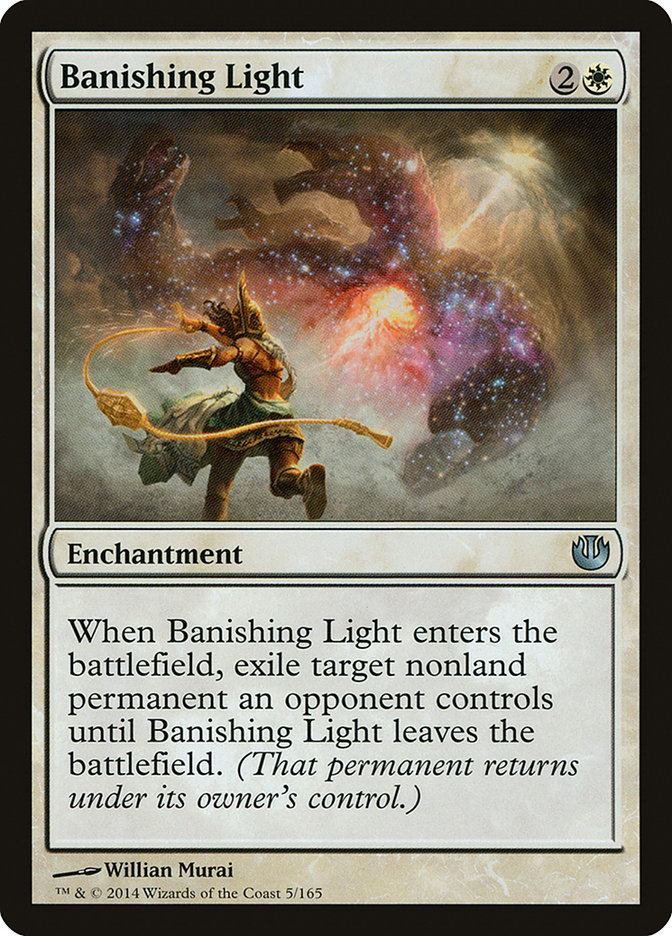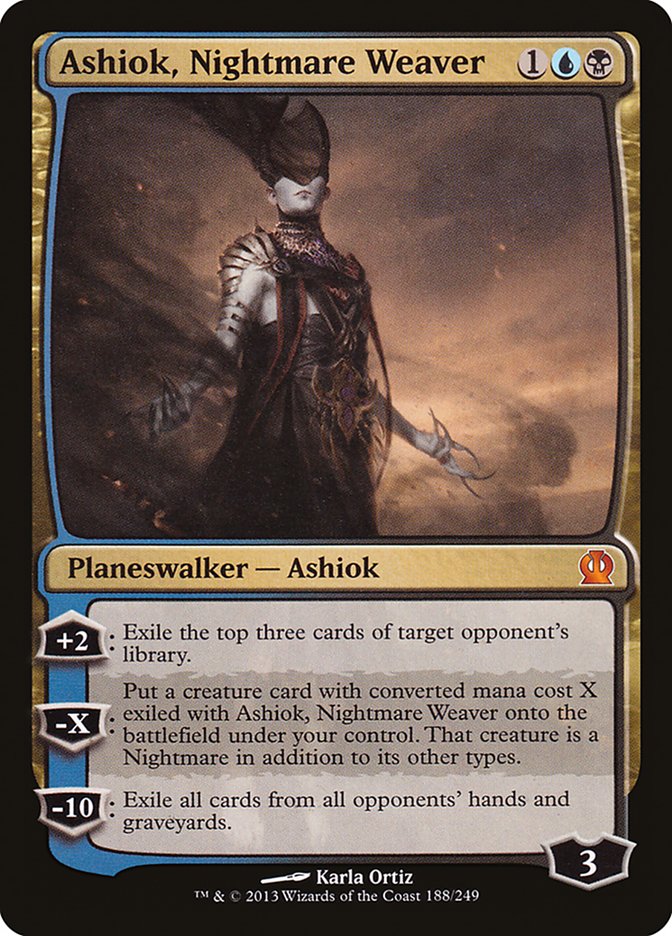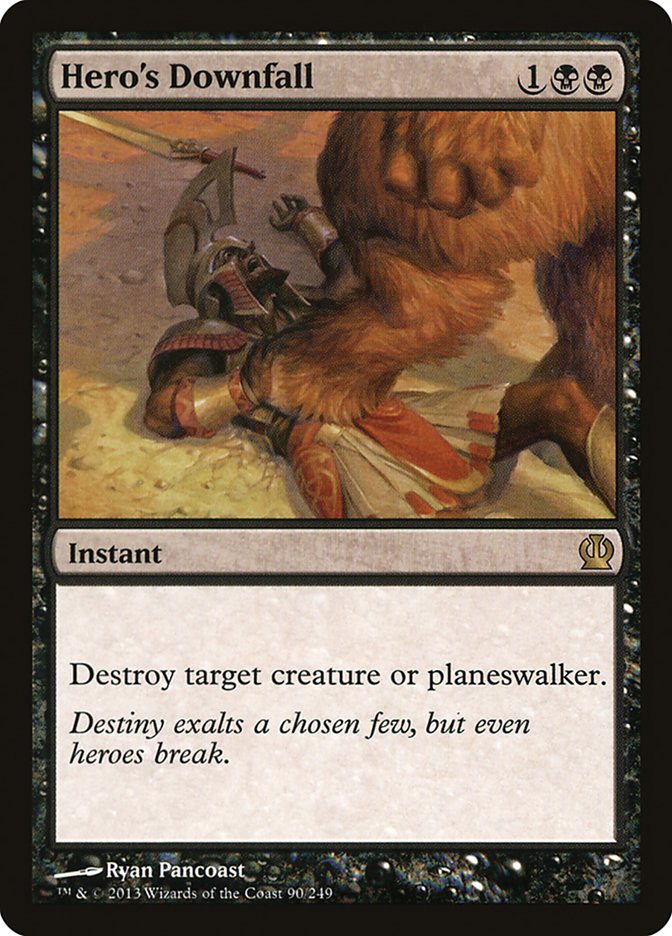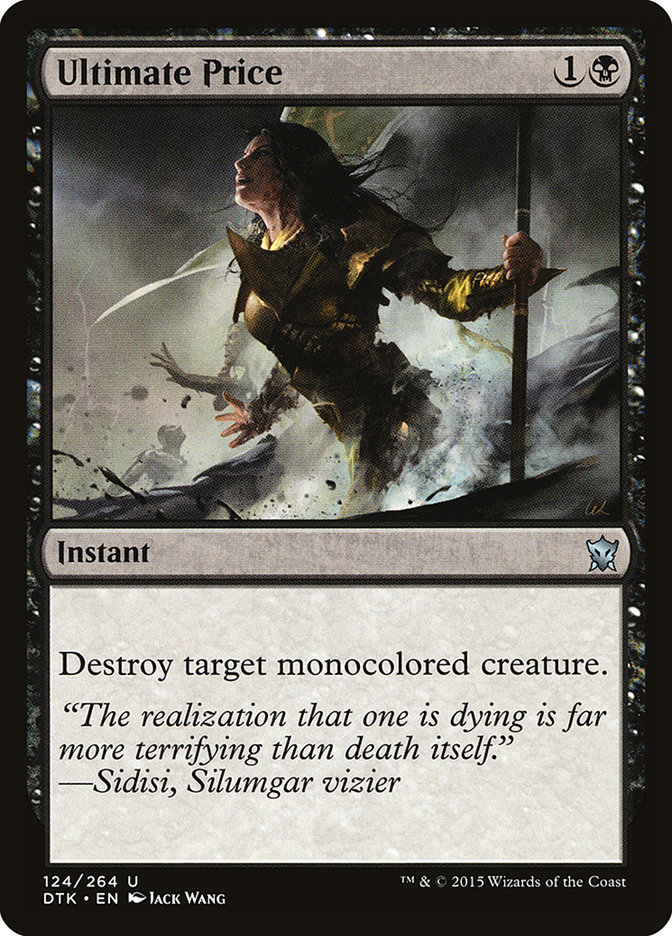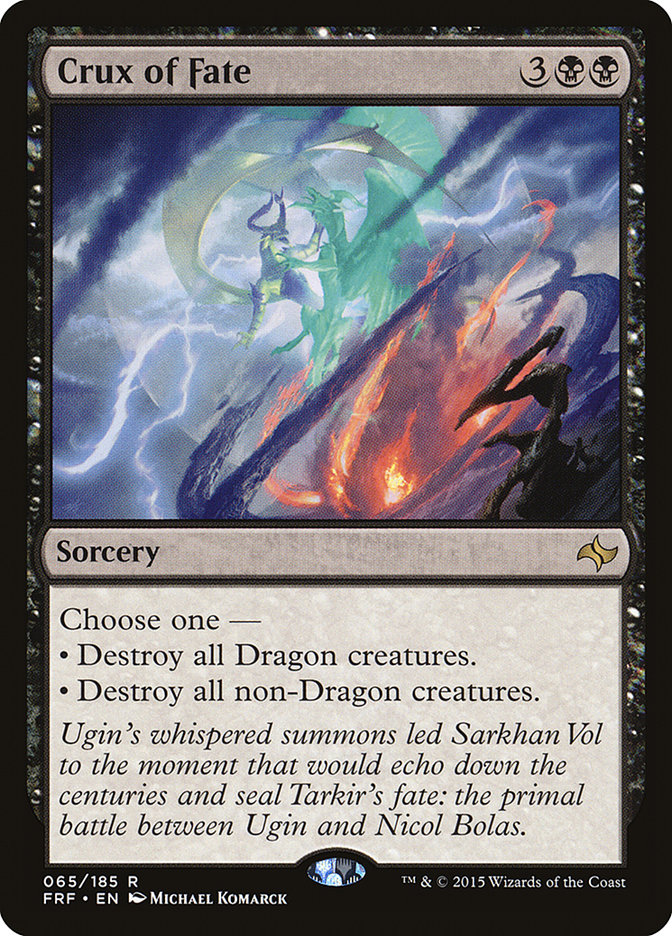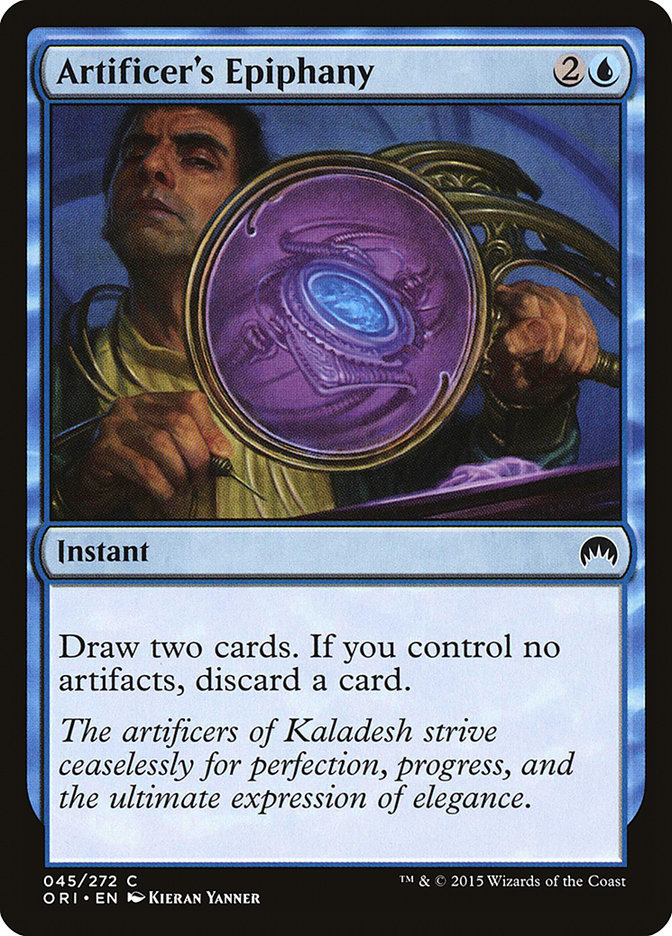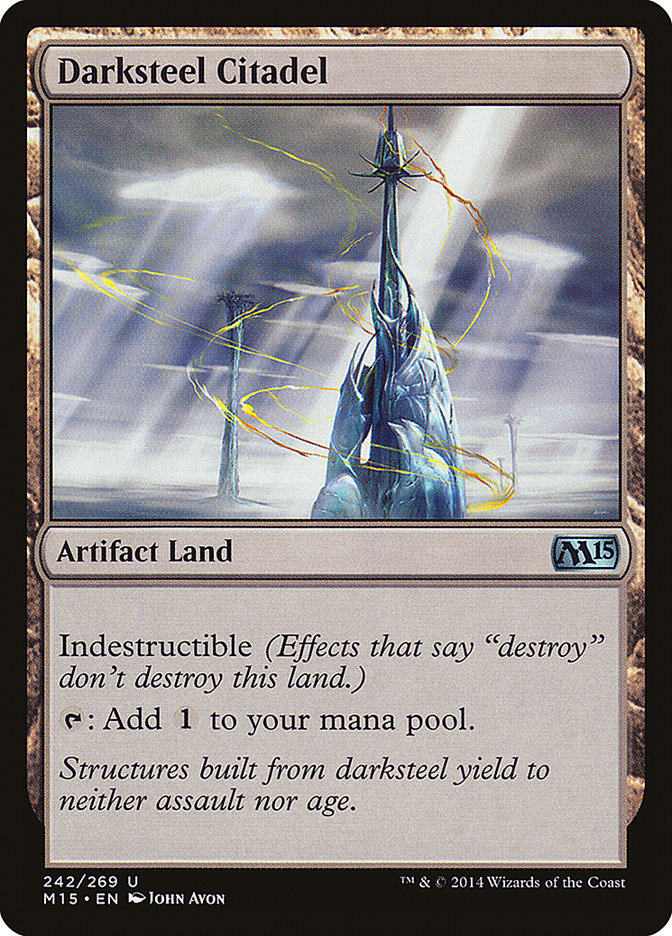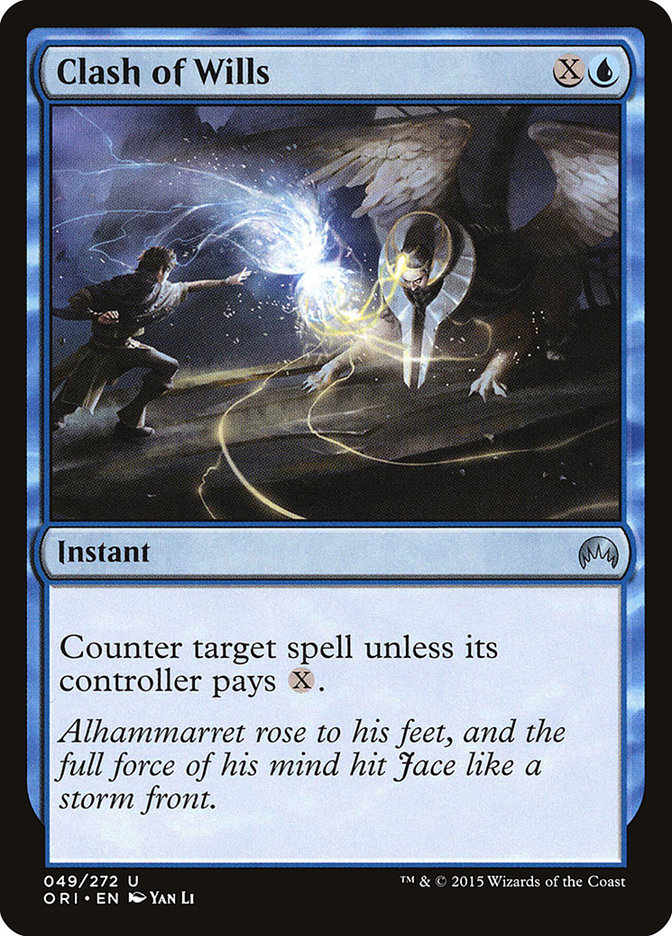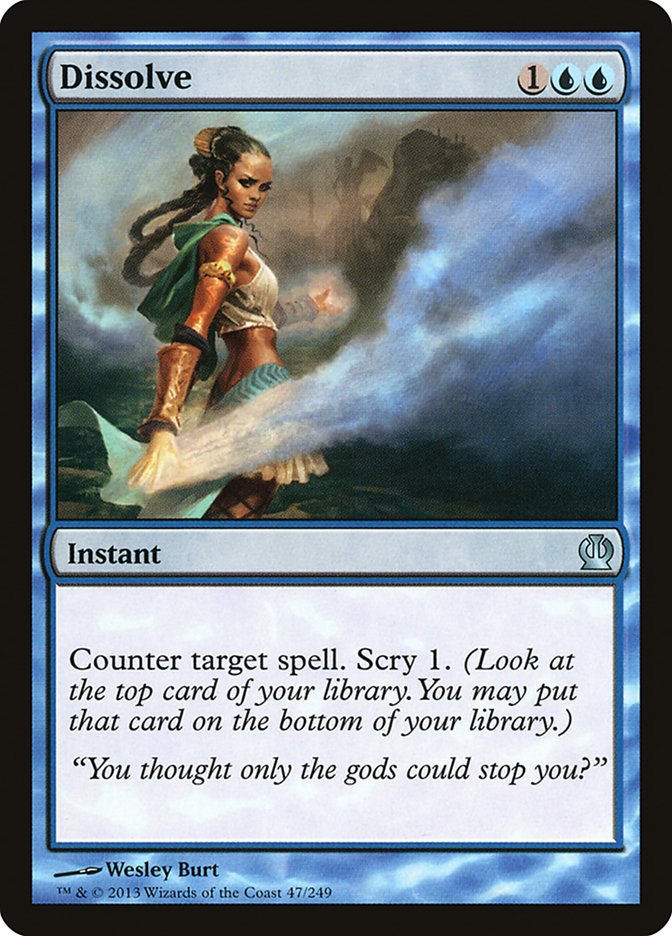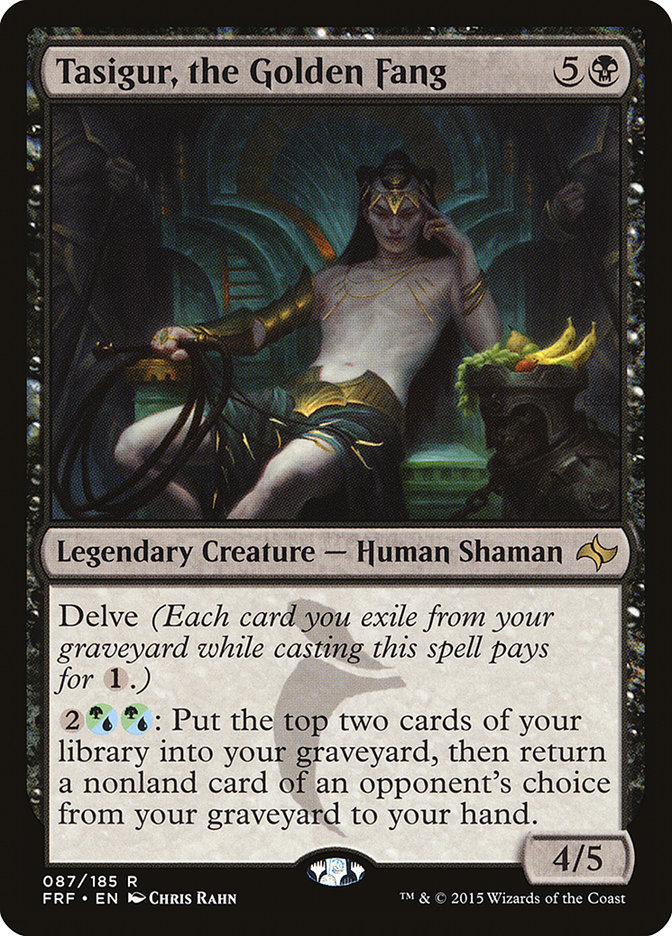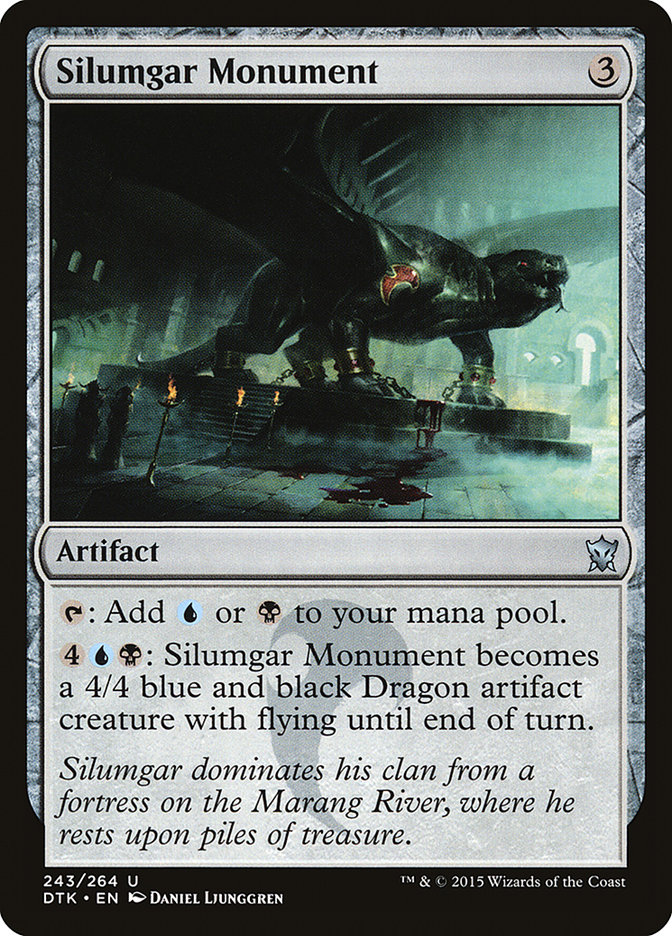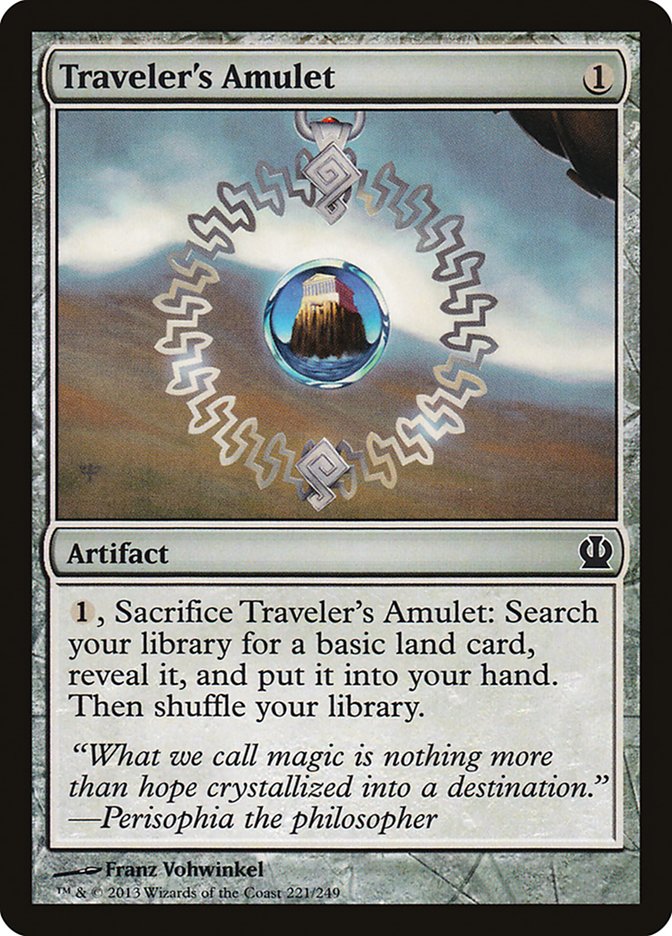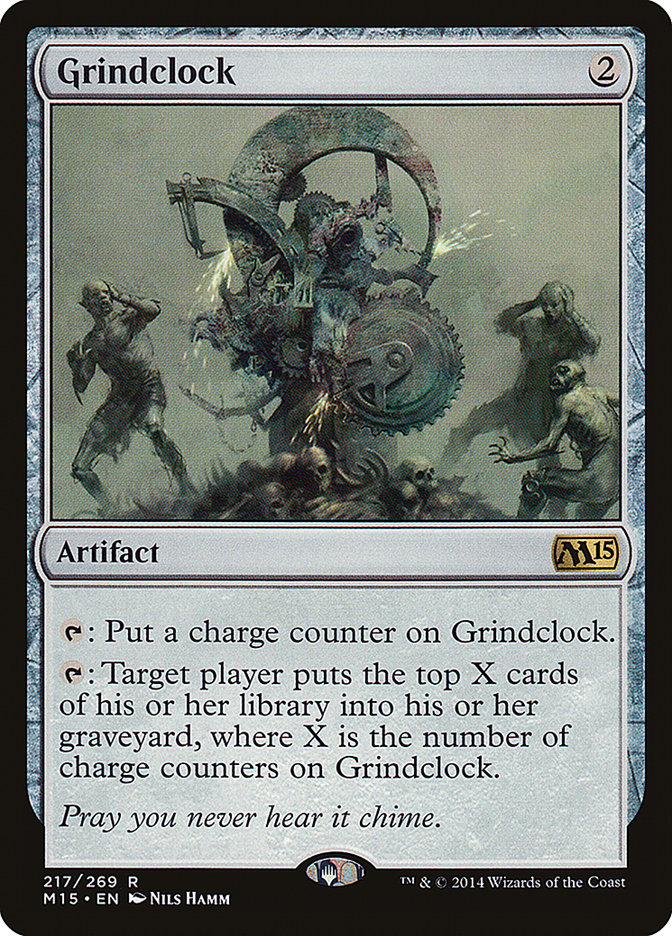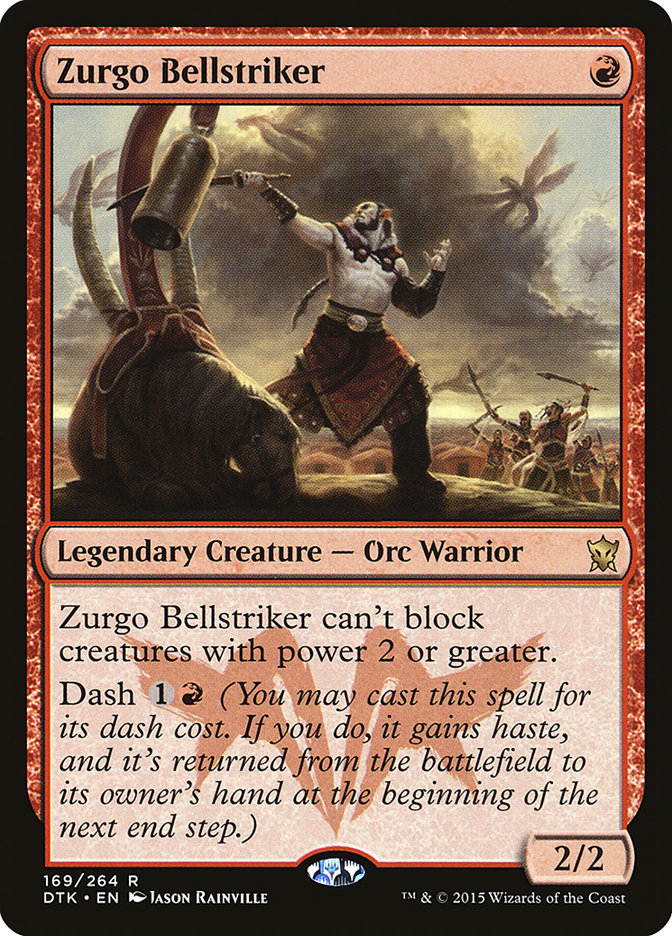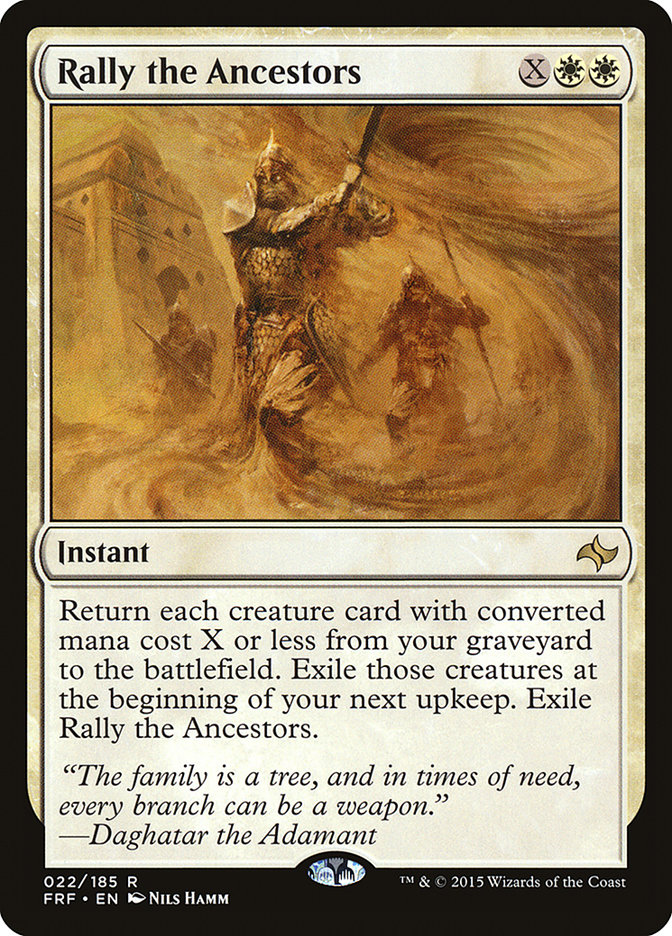Regret.
After keeping my awful G/R Devotion hand and losing my first round of SCG Chicago two weeks ago, I strolled over to the coverage area to see Jeff Hoogland doing his deck tech for his U/W Thopter Control deck.
I knew that Thopter Spy Network was an awesome card and I had really wanted to try it, but instead here I was playing Sylvan Caryatid while others were doing the innovating. While there were a few things about Jeff’s deck that didn’t jive well with me (for the love of God the fourth Darksteel Citadel @#$%!), the basic core was really awesome. I had seen Thopter Spy Network as a full-on synergy card that wanted to be in a deck full of artifacts, but Jeff correctly realized that you really only need one artifact to turn it on. From that point forward, it fuels itself and snowballs quite nicely turn after turn.
Even if I didn’t think the deck looked awesome, it wouldn’t have taken much for me to put the Sylvan Caryatids down and pick the Dig Through Times back up.
Creatures (4)
Planeswalkers (4)
Lands (27)
Spells (25)

The first question that needed to be asked was, amusingly, why white over black? As someone who was a proponent of U/W Control for a long time while U/B Control was considered the superior deck, the main reason was Elspeth, Sun’s Champion.
Elspeth is one of the best cards in the format, and also one of the best control tools printed in a long time. Aside from being a win condition, she is also one of the best tools to stabilize a board available in the format. There are a number of decks that simply can’t beat a resolved Elspeth making three tokens a turn, and that is a very powerful thing to have access to.
The issue is that without black our removal options are sparse. Each one is very conditional, and you end up in very awkward and frustrating spots:
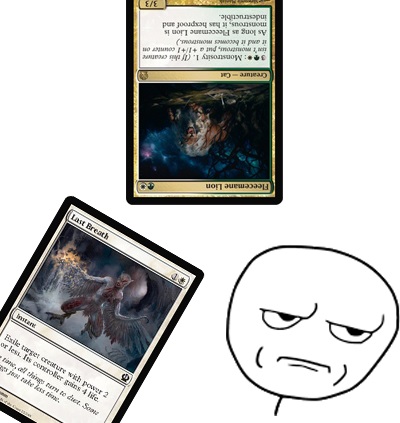
Sometimes you have a Last Breath and they have a Fleecemane Lion.
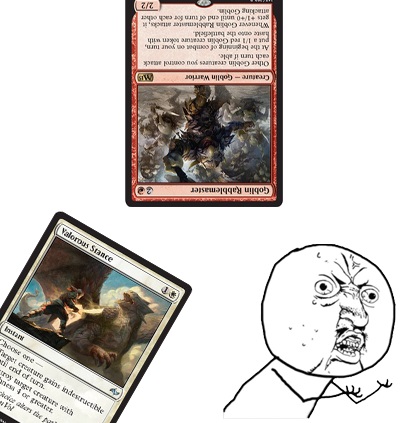
Or you have a Valorous Stance and they have a Goblin Rabblemaster.

Or you have a Swift Reckoning and they have a Mantis Rider.
Come to think of it, if they resolve a Mantis Rider you’re probably screwed.
That was always the tradeoff: U/W Control always had worse removal but got to play Elspeth, Sun’s Champion.
The problem is that one card held together U/W Control’s removal package, and that card is no longer really a playable option due to cards like Dromoka’s Command and Ugin, the Spirit Dragon being major players in the format.
Banishing Light is nowhere the card Hero’s Downfall is, but it provided a reasonable and flexible-enough impression to get the job done. Banishing Light was versatile enough to fill the gaps in your other conditional removal and allowed the deck to survive despite not having access to Hero’s Downfall.

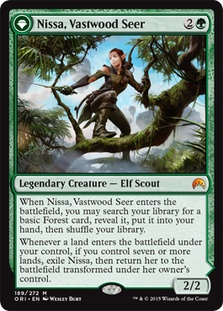
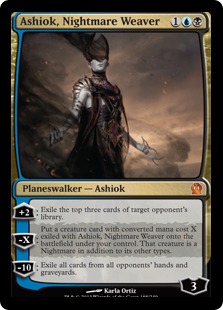
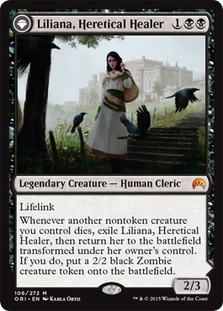
Without a card like Banishing Light, Jeff’s deck has no real answer for planeswalkers other than a single Ugin, the Spirit Dragon or just attacking them. This is a huge problem, as all four of these cards are cheap and powerful threats that will run away with the game if left unchecked. This is a definite hole in Jeff’s deck, and one that is easily exploitable.
With Banishing Light being a very real liability in our current format, it was time to move back to Hero’s Downfall.
It was time to go black.
Creatures (4)
Planeswalkers (3)
Lands (27)
Spells (26)

While the core of the deck remains the same, black does make for some major changes.
While definitely a major downgrade from Elspeth, Sun’s Champion, Ashiok, Nightmare Weaver does some very good work in the deck. It is quite good against many of the major decks like G/R Devotion and Abzan, and also a must-answer threat against other control decks.
What makes Ashiok great in this deck is how well it is bookended by Hangarback Walker on two mana and Languish on four mana. Both provide Ashiok with excellent protection and make sure high loyalty is available for nightmare weaving.
If we want it dead, it’s dead.
Hero’s Downfall fills all holes and gives us a clean and instant-speed answer to almost all of the format’s problems. Ultimate Price is a bit less clean but provides us with an early play while Languish and Crux of Fate can clean up any messes. Both sweepers play great with Hangarback Walker, as a common line is to add a counter main phase and then cast a sweeper, leaving you with a small army of thopters.
Hangarback Walker is one of those cards you just need to see in action to realize how good it is. Rather unassuming on the surface, once your opponent plays it on turn two you realize you are going to need to probably take a turn off from casting a threat to Lightning Strike or Hero’s Downfall this stupid Doomed Traveler before it gets out of control.
Hangarback Walker is great early and late, plays great defense, can build up to a sizable threat later in the game, and most importantly helps to turn on your other two artifact cards reliably. They can’t just kill your Hangarback Walker to turn off your Thopter Spy Network because they would have to kill it twice.
Speaking of Thopter Spy Network…
Have I mentioned that this card is awesome?
While it requires a bit more finesse than just running out Bitterblossom on turn two and steamrolling people, Thopter Spy Network is not only a neverending source of threats and blockers, it’s also a great card draw engine as well! Very often you will have a Hangarback Walker just hanging around or a leftover Thopter token or two and be able to attack and draw a card immediately after you cast Thopter Spy Network, helping to get that snowball rolling even sooner.
Even when that does not happen, Thopter Spy Network is cheap enough to play early on, or you can wait to play it on turn seven or eight with counterspell backup – something that is hard to do with Elspeth, Sun’s Champion.
Flying is a very powerful ability in the current format, and with the tokens being very difficult to block and providing a great defense against the format’s big fliers, each token created is very valuable.
While Artificer’s Epiphany is the most unassuming of the three ‘artifacts matter’ cards, it is quietly fantastic. Divination was already an almost-playable card in Standard control decks, and being able to play it at instant speed in a deck with a large number of instants is a huge boon.
All the artifact cards are great, but none of them would really be worth the trouble without Darksteel Citadel. It does take a bit of a toll on your manabase and it also prevents you from playing the excellent Radiant Fountain, but the payoff is more than worth it.
One of the great things about the deck is how lean the artifact package is. This means we have plenty of room for powerful control staples like full playsets of Dissolve and Dig Through Time – the best counterspell and the best card draw spell in the format respectively.
We also get to add Clash of Wills, which like Artificer’s Epiphany is a somewhat unexciting but very important cog in the deck. U/B Control decks of old had a huge hole in the two-mana slot, with only Bile Blight, Ultimate Price, or maybe Thoughtseize to play before turn three.
Clash of Wills gives us a reasonable counterspell early that scales up as the game progresses, and it really helps up bridge the gap to our late-game action. Anyone who has played Silumgar’s Scorn knows how often you just use it as a Force Spike in the early game, and we get to do that without twisting our deck to play Dragons and taxing our mana for UU on turn two.
It’s not flashy, but it’s exactly the card that control decks like this needed.
The Sideboard
The maindeck is pretty solid as-is, but the sideboard I played had an interesting problem:
It was too flexible.
I usually build my control sideboards to be very flexible and open-ended, with a wide variety of cards that can come in for different matchups.
A card like Tasigur, the Golden Fang is great in control mirrors and in long attrition battles, but also very good against decks like Mono-Red Aggro as a large creature you can cast fairly early to block with.
The issue is that this deck is much more linear than most control decks. I found myself constantly wanting to sideboard in eight cards but only having around four to five cards I wanted to sideboard out. It is very hard to cut any of the artifact package, as if you do the core of the deck stops working.
This means that it is more important for cards in the sideboard to be very high-impact cards in specific matchups. While there unfortunately (or perhaps fortunately) aren’t nearly as many backbreaking sideboard cards in Standard as there are in Modern or Legacy, we will have to make due.
Creatures (4)
Planeswalkers (3)
Lands (27)
Spells (26)

A few minor changes to the maindeck and sideboard round out the updated decklist.
One thing I really wanted in the deck was a ninth artifact, but the options really just aren’t there. Something like Silumgar Monument or Traveler’s Amulet would be remotely playable, but the power level is so low that it is likely not worth it. It is possible that the deck could run a singleton Anticipate as a way to try and dig for a Darksteel Citadel, but I don’t really think it’s needed.
The sideboard focuses a bit harder on Mono-Red Aggro, which is a bad matchup, and respects the Abzan Rally deck a bit more with a full set of Thoughtseize to go along with a Cranial Archive. It is unfortunate there really isn’t a good graveyard hate card in the format, and if Mono-Red is going to be popular it is possible we want some sort of sideboard package against them, perhaps something like Omenspeaker + Master of Waves.
Play Tips
Hangarback Walker is one of the more challenging cards in the deck to play correctly, and knowing when to use it and how much to cast it for is important.
Very often you just cast it for two mana even if you have six to eight lands on the battlefield, as it is important to leave mana open for counterspells and card draw, or at least to represent them.
Be very careful about moving Hangarback Walker past two power against Abzan! Abzan Charm is one of the few clean answers that exiles it, and it allows your opponent the option of removing it without any downside.
Figuring out if you should pump or attack can be tough, but you just need to do the math and see how the damage race will pan out. It is also important to know what the important creature sizes and removal spells in your opponent’s deck are. This will let you prepare for possible combat interactions or removal that may come on future turns.
Don’t be afraid to pump your Walker on your turn if your opponent is tapped out and has nothing you would want to block. If you wait till their end step and they kill it in response to your pump, you’ve lost out on a token.
Otherwise the deck mostly plays out like a usual control deck. You are in no rush to resolve anything, and the longer the game goes the better shape you are in. Deal with your opponent’s things one-for-one, cast card draw spells to refuel, and keep grinding away with your shields up until you eventually put them away.
Regionals And The Pro Tour
I will definitely be playing the deck at Regionals this weekend, and I highly recommend it for anyone who loves playing control decks. I’m also very excited to see how the Pro Tour shapes up as well.
Never has a Core Set shaken thing up so much!



